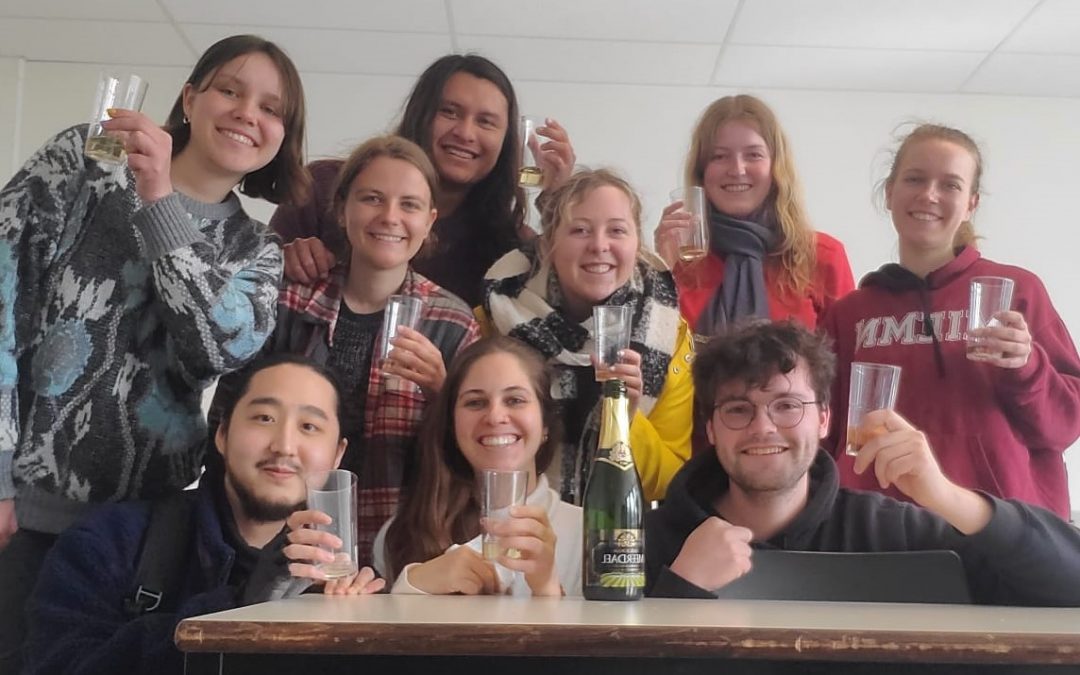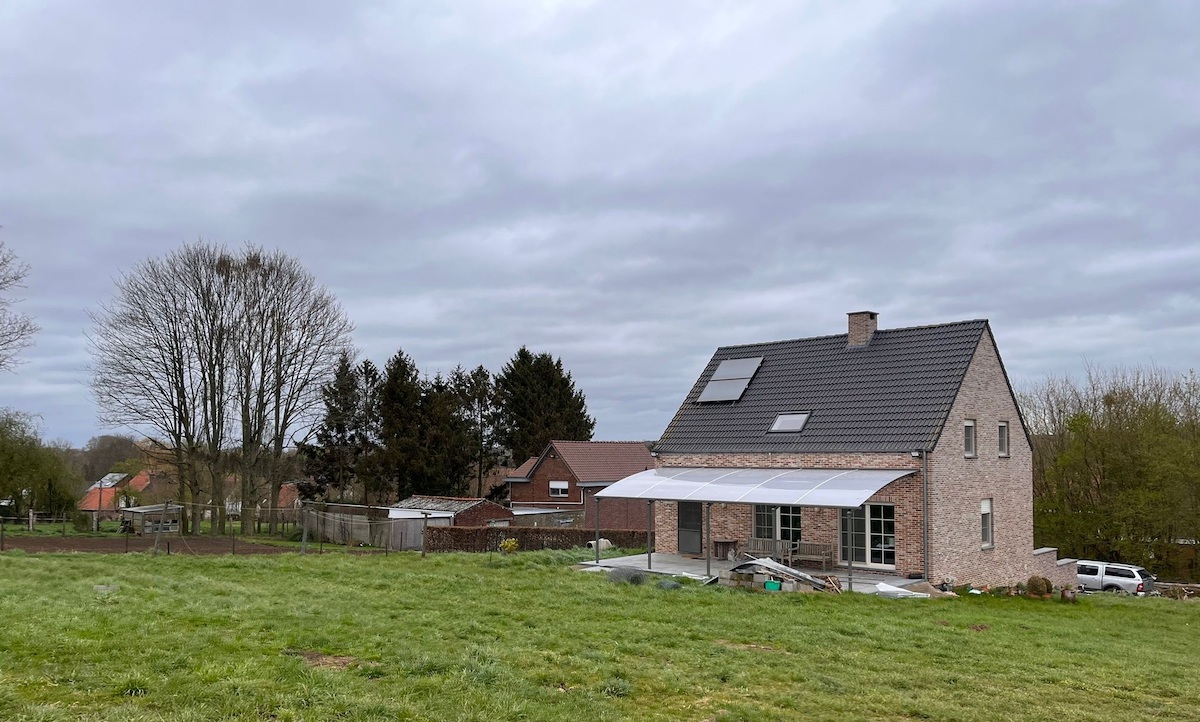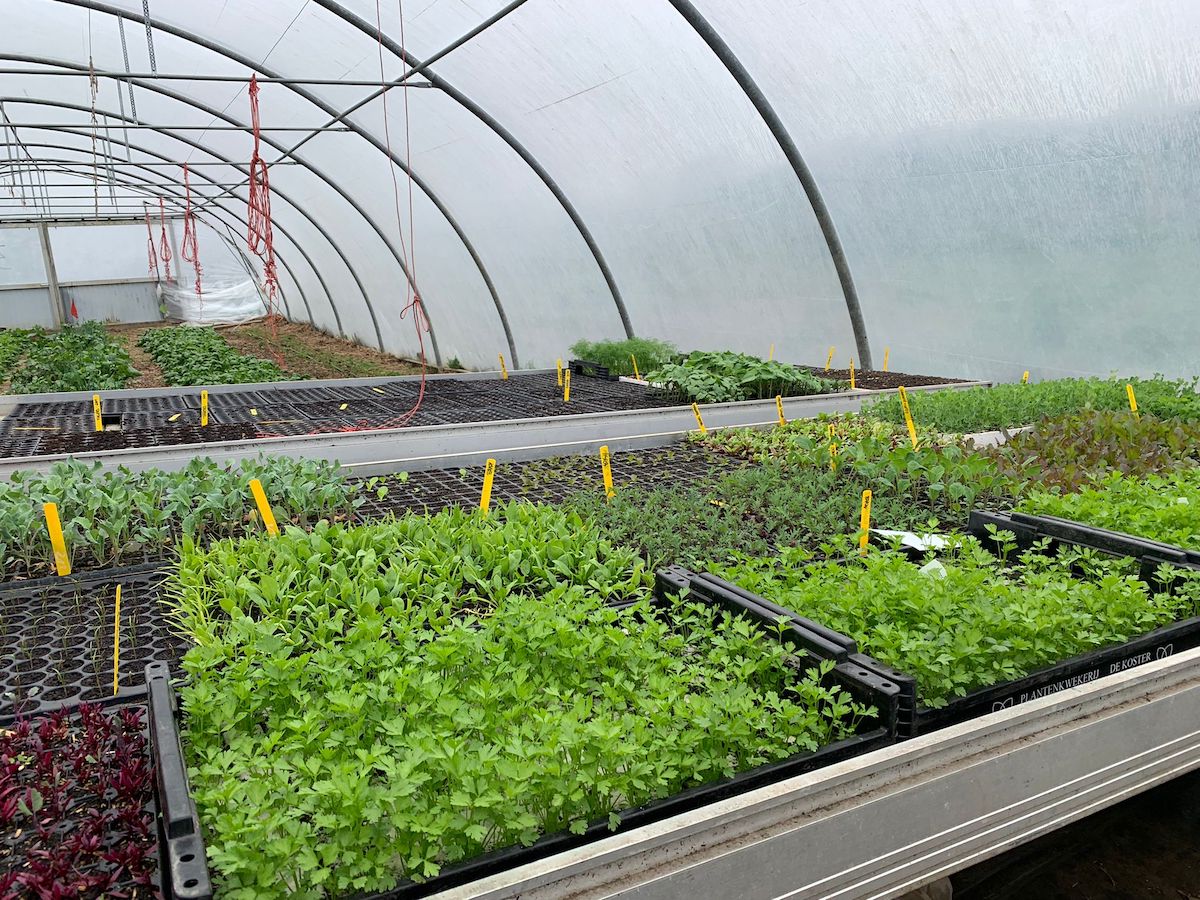By Vittorio Bellotto, Ariana Bravo, Lucía Pezo, Binh Nguyen and Arne Van den Broeck
Sowing, plowing, harvesting … and now researching or at least collaborating with our research. That is what we expected from the regional farmers during our week of fieldwork. Every morning we visited at least one farm. Conventional farmers, organic farmers, community-driven farming initiatives… we did them all. And if those were interesting conversations! Not only because sometimes we got a present (especially when this present is a pleasant drink with bubbles), but also because of the nice and instructive stories we heard.
Let us take you to some farmers and present you with interesting findings.
1. Farming through generations
It’s another day of the Living Lab, and we have the opportunity to visit a cattle farm. The old farmer couple comes out of a nearby house and greets us very kindly. We are here today for an interview and observation to collect data for the final report.
While the man is still busy feeding the cows, we talk to his wife to learn more about their stories. The husband, born and raised in this area, has been working on this farm for many years that he does not even remember exactly. He inherited the cattle farm from his family, grandparents, and great-grandparents. It has been passed down from generation to generation. The working days are usually very long, but “my husband has always loved doing this, and I have followed him because this is his life”. The conversation continues with her passion for the protection and preservation of nature. For her, they are essential because “you are connected to nature, you are connected to the animals”. On their farm, there are strips of grasses that protect the soil from erosion, grains that stay all winter for the birds, special flowers for the bees, and many more.
The husband finishes his work and takes us on a farm tour. Only about 40 to 50 dairy cows are standing in a small corner of the farm, and except for the large grassy area used for cattle feed, there is little sign of farming. We ask him why – “that’s all, that’s all we have, we are going to stop quietly… I am going to retire next year,” he says, “so I am going to sell everything soon”. Also, they would like to bring innovations to their land that are better for the animals as well as the people and nature, but “now we can not bring innovations for years because our son does not… He is not interested at all. This life is too hard, and he has no intention of doing it”. “I do not know how young farmers can start this activity nowadays…” – the farmer continues.
After finishing the tour, the farmer jokingly asks us to come back to extract the milk from the cows if we still stay in Belgium, knowing that his last time doing so might come soon… The living lab day on the farm is only brief, but it brings us many insights and thoughts beyond what we come for.
2. Sustainable winegrowing
Another day, another farm. Today we went to a sustainable winegrower. He showed us that nature and agriculture can go hand in hand. Trees are used to protect the vines, environmentally friendly products ensure that as minor damage as possible is done to fauna and flora, and all the water used is taken directly from the aquifers in the local subsoil, the same ones that feed the ‘Minnebron’. The roots go as deep as 16 feet, the winegrower told us. They even had their own water purification system. They also care about the wildlife. The vineyards are not fenced; small animals like rabbits and even deers are allowed to enter to eat the grass and other treats that are found there. Only the wild boar bothers them. These like to eat acorns coming from the oak tree, and that is exactly the tree that is widespread around the vineyards. For the time being, the wild boars stay away from the grapevines, but they make tiny holes with their feet so that the landscape is getting disrupted and water puddles. In addition, the pits are getting deeper and deeper. The winegrower says that the wild boar population is managed by the Agency for Nature and Forests and that it is not a big problem yet, but he does point out that this needs to be continually worked on.
In addition to their current sustainable agriculture practices, they also strongly focus on innovation. Putting in place new anti-frost techniques and autonomous-driving tractors. The reason behind this is twofold. On the one hand, they have to comply with increasingly strict regulations. On the other hand, they want to make a reputation this way and create a product that can be sold on the market.
The winegrower was proud to show how they try to make their whole operation sustainable. Integrating of the agricultural activities in the natural environment to deliver a sustainable product shows that a certain mutualism or symbiosis is possible between nature (conservation) and agriculture. When asked if there were any other sustainable winegrowers working in Belgium, the man replied that there were only a few of them. He attributed this to the extra investment of time and money that this type of wine growing entails compared with conventional viniculture. So yes, to conclude, it is probably possible to transfer from conventional to sustainable viniculture, and maybe even beyond… But time, investments and a good approach are required for sure.
Oh, and by the way. As icing on the cake, we were able to conclude this day with a nice glass of bubbles, gifted by our interviewee. Talking about enjoyable fieldwork! Thank you and SCHOL!
3. Community-Garden
“From the farm to fork”
During our last day of fieldwork, we had the pleasure to visit a community-garden (NGO) and talk with Axel, a horticulture professor and passionate about agriculture. He and his colleagues started the NGO in 2018 with half a hectare of cranberries and raspberries. While having a walk in the crops of potatoes, lettuces, cauliflowers, beetroot, onions, among others, he introduced to us the concept of Community Service Agriculture (CSA), where people can be part of the harvesting process of the fruits and vegetables and pick up the harvest any time they want. For him, CSA is more than promoting sustainable agriculture, it is also about sharing an experience where you can get in contact with nature and be conscious about what you are eating and all the effort behind a nice meal dished up on your table during lunchtime.
For Axel, nature is a fundamental part of farming and life and “big, industrial farmers do not understand the basics”. That is the reason why they only work naturally. “We do this all in a biological way. So we are not using fertilizers, no chemical pesticides, because, in life, we use so many chemical products that we don’t need them in the fruit, if possible. So that’s the way we choose for biological production”. The community-garden initiative is always looking to find the best solutions, as an example, they use manure from their cattle as fertilizer for their local production. In terms of water, they absorb and reuse the rainwater that ends up in the greenhouse.
You can contribute to the organization as a volunteer or customer, and you only need to pay a one-time membership for the next six or ten months, depending on the season and what you decide to harvest. The farm also offers meat from sheep and cows as well as chicken. There is also a small but lovely store with over 50 different kinds of vegetables, cauliflower, beans, potatoes, and so on where you can do your groceries. In the future, they are planning to expand their fields to 16 hectares in the city of Leuven. It was such a pleasant visit where the green of the vegetables and the colour of the fruits made us enthusiastic about getting our hands in the soil and start harvesting our food. If you have the opportunity don’t hesitate to get involved and give it a try! 🙂
And that’s a wrap! We hope from this blog post that you grasp the heterogenous visions and practices that farmers experience. Certainly, listening and learning from their voice and field knowledge has been an enriching experience. Of course, we visited many other farmers and had great interviews with numerous experts, but if we had to cover them all here, you would probably still be reading tomorrow. However, if you still want to learn more, don’t hesitate to send us a friendly message, and we’ll be at your beck and call!
¡Adiós!
Vittorio, Ariana, Lucía, Binh and Arne



